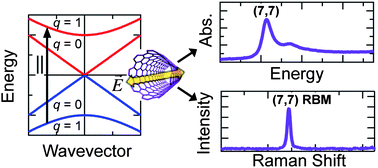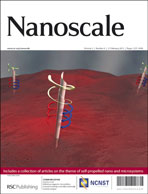Fundamental optical processes in armchair carbon nanotubes
Abstract
Single-wall carbon nanotubes provide ideal model one-dimensional (1-D) condensed matter systems in which to address fundamental questions in many-body physics, while, at the same time, they are leading candidates for building blocks in nanoscale optoelectronic circuits. Much attention has been recently paid to their optical properties, arising from 1-D excitons and phonons, which have been revealed via photoluminescence, Raman scattering, and ultrafast optical spectroscopy of semiconducting carbon nanotubes. On the other hand, dynamical properties of metallic nanotubes have been poorly explored, although they are expected to provide a novel setting for the study of electron–hole pairs in the presence of degenerate 1-D electrons. In particular, (n,n)-chirality, or armchair, metallic nanotubes are truly gapless with massless carriers, ideally suited for dynamical studies of Tomonaga–Luttinger liquids. Unfortunately, progress towards such studies has been slowed by the inherent problem of nanotube synthesis whereby both semiconducting and metallic nanotubes are produced. Here, we use post-synthesis separation methods based on density gradient ultracentrifugation and DNA-based ion-exchange chromatography to produce aqueous suspensions strongly enriched in armchair nanotubes. Through resonant Raman spectroscopy of the radial breathing mode phonons, we provide macroscopic and unambiguous evidence that density gradient ultracentrifugation can enrich ensemble samples in armchair nanotubes. Furthermore, using conventional, optical absorption spectroscopy in the near-infrared and visible range, we show that interband absorption in armchair nanotubes is strongly excitonic. Lastly, by examining the G-band mode in Raman spectra, we determine that observation of the broad, lower frequency (G−) feature is a result of resonance with non-armchair “metallic” nanotubes. These findings regarding the fundamental optical absorption and scattering processes in metallic carbon nanotubes lay the foundation for further spectroscopic studies to probe many-body physical phenomena in one dimension.


 Please wait while we load your content...
Please wait while we load your content...